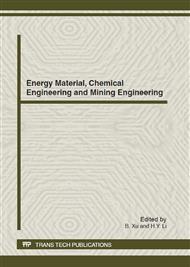p.3
p.9
p.13
p.18
p.22
p.27
p.31
p.39
Finite Element Analysis of Energy Saving Jointing Method Base on Energy Materials: Clinching
Abstract:
The clinch joining technique can be used to join energy saving materials based on a cost effective, environmentally friendly process. In this paper, the mechanical joining method by clinching with segmented die is analyzed utilizing a finite element method. A comparison is conducted about the principle of forming process and the metal flowing direction for two different types of die, drawing conclusions that a better interlocking length can be obtained using segmented die. Analyzing the quality parameter of the clinching results, finds the reason why the segmented die can get a better neck thickness and undercut. Meanwhile, the results of clinching with segmented die also show a good agreement with experimental results.
Info:
Periodical:
Pages:
9-12
Citation:
Online since:
October 2012
Authors:
Keywords:
Price:
Сopyright:
© 2012 Trans Tech Publications Ltd. All Rights Reserved
Share:
Citation:


